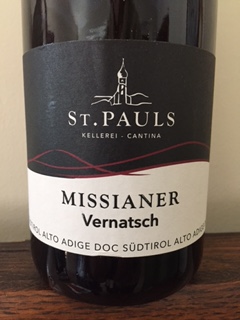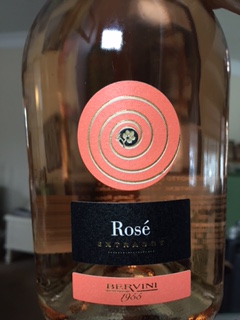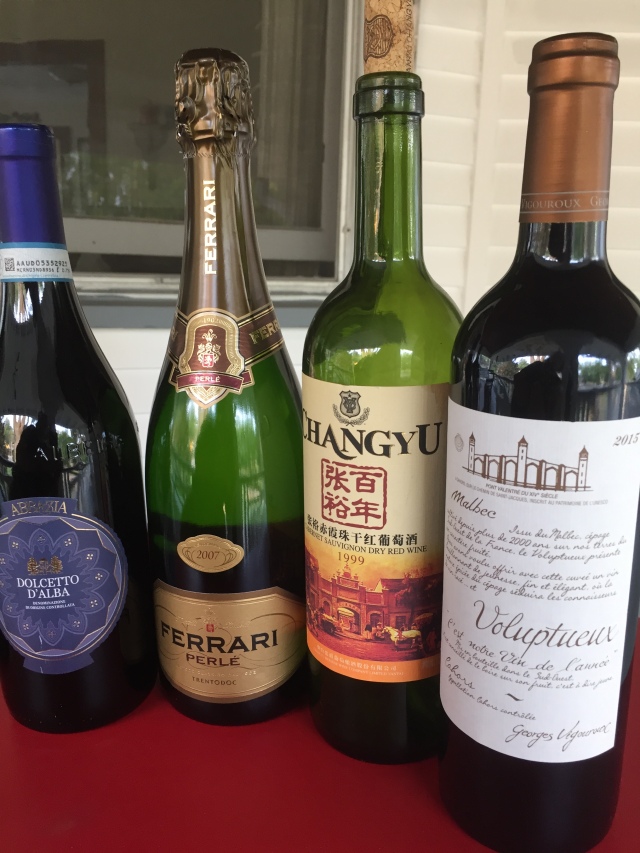Ah…about four hours ago, spring arrived here in the northern states. It’s my favorite season because it’s the most forward-looking; already I’m getting jazzed about new projects, new discoveries – new possibilities!

[Photo: “The de Brye Vineyard” by Hanzell Vineyards, courtesy of flickr.com]
Vineyards love spring; it’s their time of rebirth and reconnecting with the world. Their new growth cycle has begun, and vineyard managers will respond with long hours of aerating the soil, planting and never-ending weeding. Soon they’ll begin trellising and training their vines so the leaves will be ready to soak up the sun.
In case you’ve forgotten your 6th-grade science lessons, today is the March equinox, also called the “vernal” or spring equinox, one of two annual occasions when the sun shines directly on the equator (the other equinox is in September). When that happens, day and night are almost equal the world over. Technically, it’s the moment when the sun crosses the “celestial equator” – an imaginary line in the sky that sits directly over earth’s equator.
The earth still is tilting at 23.4º, but today our tilt is perpendicular to the sun’s rays. We could go into the differences between “astronomical spring” and “meteorological spring,” but I think we’ve had enough science for one day.
March 20 also is World Storytelling Day, when we’re supposed to promote storytelling by, um, telling stories. Here’s one about a particularly fun spring tradition (though it’s likely give my sister Margie an episode of PTSD):

[Photo: “Chichen Itzá” by Esparta Palma, courtesy of Flickr.com]
The ancient Mayans, you probably know, devised a remarkably sophisticated calendar. Each year on the vernal equinox, they sacrificed one of their own on top of their huge pyramid, El Castillo, at Chichen Itza, Mexico. Can you see those tiny people in the photo, slithering up and down the narrow stairs to the sacrificial altar? Margie slithered up – but then she was too scared to come down. No railing, no rope – just her and a few other brave souls who, unlike her, were not terrified and sobbing. I couldn’t help her; I’ve been called a lot of things, but brave-with-heights isn’t one of them. Fortunately, she enlisted the help of an older gentleman who helped her down. The temperature that day was at least 100º; it’s a wonder no one toppled over from heat exhaustion. Twenty years later she still accuses me of being unsympathetic.
We celebrate spring with a bit more restraint in Cleveland. No gruesome sacrifices here, though I do expect the high-spirited guys across the street to dance naked on the front lawn tonight. (You know who you are!) I like to celebrate in some way that acknowledges spring’s rebirth and renewal. Some years I pledge to meditate every morning – a vow I have to repeat, since my resolve usually breaks down over the months. This year I’m starting to clear my space and get some fresh energy into this place.
If that sounds like too much work, you can always kill some time trying to balance an egg on its pointier end. Folklore says this is the day when it’s possible.
Wine Lingo: Bud break = when dormant buds on the grapevine break open and the shoot begins to grow. It happens when spring rain sends water and nutrients up through the roots and into the vine; the buds swell and finally burst, liberating tiny, exquisite grape leaves. Bud break is the first stage of the vine’s growth cycle.

Vino ‘View: Last year in early spring I visited Trentino Alto-Adige, a mountainous wine region in northern Italy. The landscape was adorned with wildflowers, and I wanted tonight’s wine to reflect that adventure. I chose 2016 St. Pauls Schiava Missianer (12.5 percent alcohol, $14), made from 100 percent Schiava, a red grape that thrives in Südtirol (South Tyrol) Aldo Adige DOC. One reviewer called this wine “lightweight” and I think that’s fair; it’s definitely light-bodied with strong strawberry and red cherry aroma and taste. I also got some floral hints, though it could have been self-suggestion; I was thinking of those wildflowers in the foothills. Treat it like a Pinot Noir but with more acidity. I chilled it for 30 minutes and paired it with broasted chicken.
[St. Pauls Missioner Vernatsch was sent to BigSexyReds for review.]
Happy spring!
Mary





 Here’s all you really need to remember: anyone who’s literate can understand enough to know what they’re buying. You just need to identify whether
Here’s all you really need to remember: anyone who’s literate can understand enough to know what they’re buying. You just need to identify whether 


 Vino ‘View: A delicious example of an NV wine is Astoria’s
Vino ‘View: A delicious example of an NV wine is Astoria’s  [Jamie Stewart, brand manager of Cantine Ferrari Trento, with a few of the winery’s 19th-century gadgets.]
[Jamie Stewart, brand manager of Cantine Ferrari Trento, with a few of the winery’s 19th-century gadgets.] Vino ‘View: Grappa Segnana Solera Selezione (42 percent alc., about $40 US) After I was treated to a taste of this sublime spirit I couldn’t pull out my wallet fast enough; I had to take a bottle home. Made of 60 percent Pinot Nero and 40 percent Chardonnay, it blends five vintages in a solera process: some brandy from the oldest French oak barrels is bottled, then brandy from each vintage’s barrels tops off the next oldest, and the progressive blending continues each year. The barrels impart a roasted, vanilla, smoky flavor mixed with dark fruit and a long, fruity finish. Don’t look for Grappa Segnana on store shelves in the US; you’ll have to order it online. Google for the best price.
Vino ‘View: Grappa Segnana Solera Selezione (42 percent alc., about $40 US) After I was treated to a taste of this sublime spirit I couldn’t pull out my wallet fast enough; I had to take a bottle home. Made of 60 percent Pinot Nero and 40 percent Chardonnay, it blends five vintages in a solera process: some brandy from the oldest French oak barrels is bottled, then brandy from each vintage’s barrels tops off the next oldest, and the progressive blending continues each year. The barrels impart a roasted, vanilla, smoky flavor mixed with dark fruit and a long, fruity finish. Don’t look for Grappa Segnana on store shelves in the US; you’ll have to order it online. Google for the best price.